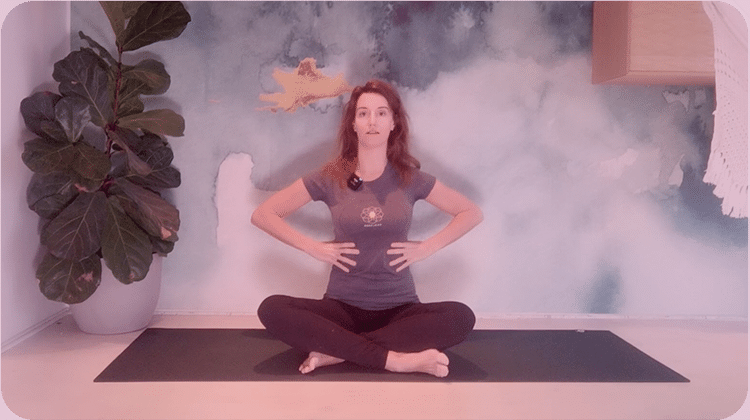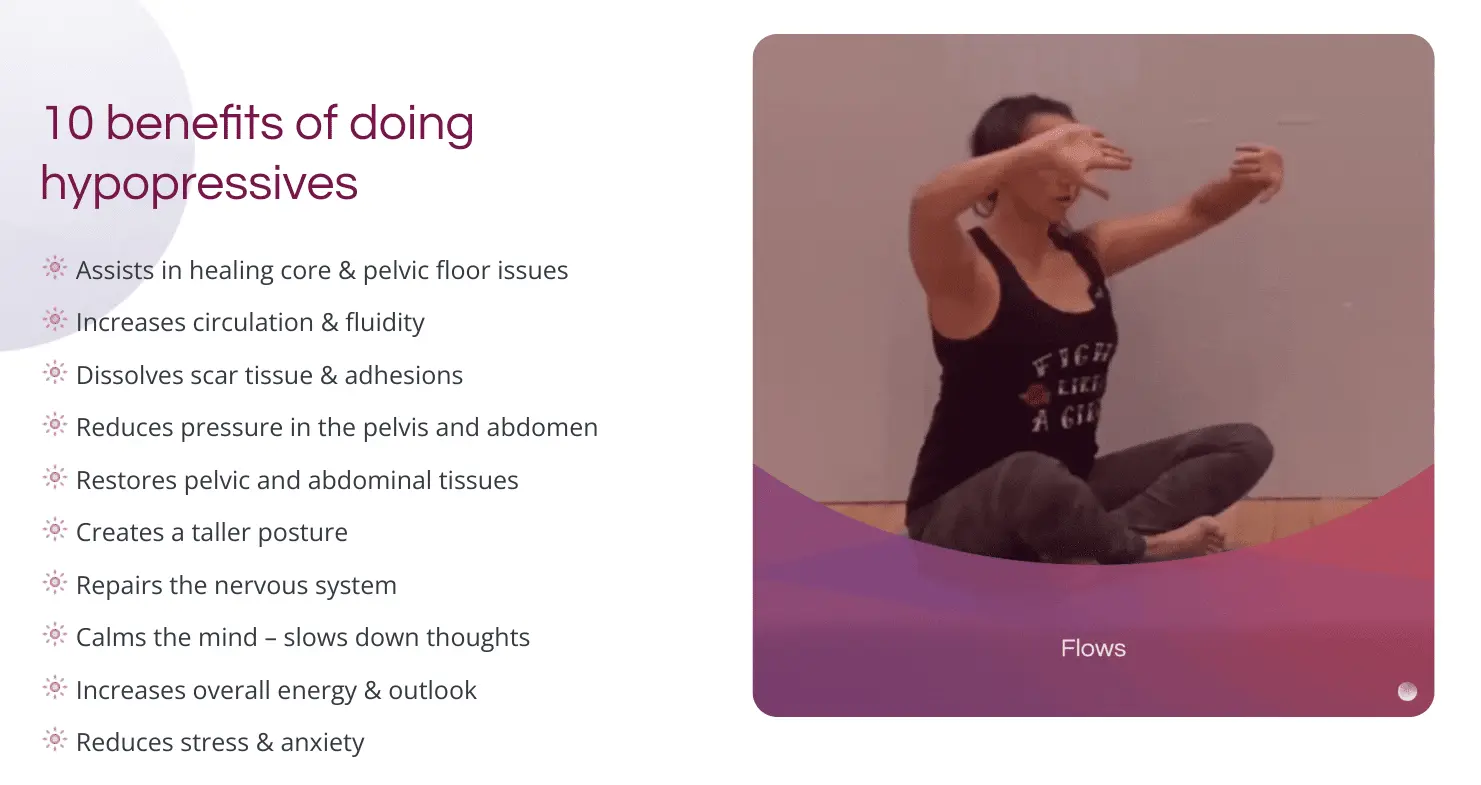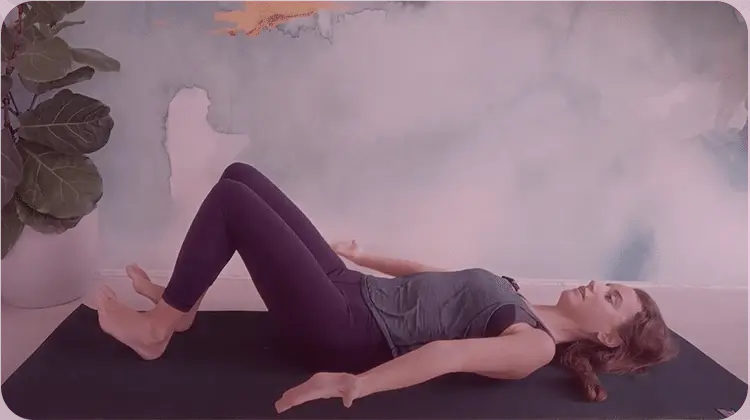The Definitive Guide to PMS & 8 Natural PMS Remedies
- June 14, 2022
- Hormonal Health
Did you know that up to 80% of all menstruating women experience PMS each month? If you’re one of them, know that you’re not alone. Although the western medical system has researched PMS for decades, there haven’t been any real, long-lasting solutions. Perhaps, they’re looking at it wrong. Rather than putting a bandaid on the symptoms, we could benefit from a deeper understanding of the root causes of PMS and applying natural remedies.
Dr. Christiane Northrup, renowned doctor and authority on women’s health, says it best.
The effects of the mind, emotions, diet, light, exercise, heredity, and childhood traumas must all be taken into account when treating PMS. All combine to create the end result of cellular inflammation, which manifests in many different ways.
In other words, PMS is not something that a pill alone can fix. Birth control pills, pain-killers, and heat pads may provide some relief, but premenstrual syndrome is multifaceted. It’s complex and affects every woman uniquely.
To heal PMS, it’s critical to have a deep understanding of the body, to chart symptoms, make lifestyle changes, and explore the emotional and psychological connections that affect our endocrine system, and ultimately our sacred womb.
In this article, we plan to cover many of these topics in detail and provide real, natural, and safe solutions to a dis-ease that affects too many women around the world.
In This Guide We Cover:
- What is premenstrual syndrome (PMS)?
- Cultural stories of PMS
- Most likely causes of PMS
- Symptoms of PMS
- Statistics on PMS
- The fallacy of the medical system
- The mind-body connection to PMS
- 8 natural Remedies for PMS
- FAQ: Answers to the 8 most searched PMS questions on Dr. Google
What Is Premenstrual Syndrome
(PMS)?
The 14 days that lead up to your next period is the postovulatory phase. This is when the symptoms of PMS begin to manifest.
The first phase begins on day one of your period, the day you start bleeding. And it lasts until ovulation, which is known as your “fertile window”. Then, the following 14 days that lead up to your next period is the postovulatory phase. This is when the symptoms of PMS begin to manifest if you have them.
Now that we’ve briefly touched on the monthly menstruation cycle, let’s dive deeper into answering the question “what is PMS?”
In short, the term PMS refers to over 100 different physical, mental, and emotional symptoms that can occur up to 2 weeks before starting your period.
Although the term premenstrual syndrome originated in 1953 by Katharina Dalton, M.D., it’s still difficult to pinpoint the exact cause of PMS. A woman’s hormonal system is very complex, so there are many possible reasons why it exists.
Over the last several decades, researchers and scientists have explored this syndrome, attempting to uncover its root causes. Although there’s still much to learn, the discoveries did force the medical community to acknowledge the validity of PMS. This was a huge win for women everywhere because for years it wasn’t taken seriously. In fact, many people made a mockery of it.
Cultural Stories of Menstruation
Over the last thousand years or more, there have been misconceptions and taboos about a woman’s menstrual cycle. Although some cultures recognized bleeding as powerful and sacred, others viewed it as toxic and inferior. In societies with negative and false beliefs about this natural cycle, women were sent off to a menstrual hut to bleed. While some women couldn’t go into churches, particulate in religious rituals, or enter certain establishments during their period.
?These absurd practices and limitations imposed by the patriarchy caused women to lose touch with their monthly cycle — the essence of their divine feminine. No wonder many of us see menstruation as a thing we have to endure, rather than a powerful sacred process we can embrace. Besides bleeding, uncomfortable PMS symptoms may occur beforehand, and there are a few major reasons why.
Most Likely Causes of PMS
Given the wide array of symptoms and scientific studies, the causes of PMS are most likely linked to stress on the ovarian hormones (estrogen, progesterone, and testosterone).
Other causes include eating a processed diet, exposure to environmental toxins, and other forms of stress — including physical, mental, and emotional stress.
Some examples of these forms of stress include:
• Drinking too much caffeine
• Being overweight or obese
• A magnesium deficiency
• Not getting adequate physical exercise
• Unhealed sexual trauma
• Amenorrhea (absence of your period)
• Discontinued use of birth control pills
All this equates to stress which overworks the adrenals. These are the glands that produce the “stress hormone” known as cortisol. Over time, our adrenals get tired and our cortisol levels become grossly imbalanced leading to “adrenal fatigue” or “adrenal exhaustion”.
These conditions are so common nowadays given the high demands, pressures, and need to get it all done quickly. It creates massive amounts of stress on women in Western societies.
Sadly, it can get worse from here. When we deplete cortisol levels and encounter future stress, the hormone progesterone will respond by converting itself into cortisol.
Now, progesterone may become depleted and imbalanced, making it difficult to achieve hormonal balance.
With an imbalance in our hormonal system, we face a much higher risk for developing recurring PMS symptoms.
What are the Symptoms of Premenstrual Syndrome?
All this equates to stress which overworks the adrenals. These are the glands that produce the “stress hormone” known as cortisol. Over time, our adrenals get tired and our cortisol levels become grossly imbalanced leading to “adrenal fatigue” or “adrenal exhaustion”.
Knowing when these symptoms happen is very important. If they’re consistent each month during the postovulatory phase, but then disappear within the first few days of menstruation, these could indicate symptoms of PMS.
However, if this doesn’t describe your personal situation, the symptoms could mean something else. It’s crucial to track your symptoms so you can either rule in or rule out PMS. The timing, not the nature of your symptoms, is what leads to a PMS diagnosis.
Physical, Mental, & Emotional Signs of PMS
As mentioned earlier, there are over 100 possible symptoms that women may endure during the postovulatory phase of menstruation. Not all of them are physical in nature. Many can be mental and emotional as a result of the mind-body connection, which we’ll explain in detail below.
These are common symptoms to pay attention to during post-ovulation. By tracking them for at least three months, you’ll begin to notice commonalities or patterns and that can help determine the best approach to treatment.
Not all these symptoms are exclusive to PMS. This makes keeping a log of them even more essential. You’ll be able to look back on your notes and know when and for how long you felt physical, mental, or emotional discomfort.
List of Common Symptoms:
• PMS bloating
• Abdominal cramping
• Acne
• PMS exhaustion, fatigue, lethargy
• Back pain
• Headaches or migraines
• Breast tenderness and pain
• Edema
• Joint swelling and pain
• Nausea
• Fainting
• Confusion
• Mood swings
• Anger or rage
• Anxiety, irritability, or heart palpitations
• PMS depression, sadness
• Food binges, salt cravings, sweet cravings
• Sex drive changes
• PMS night sweats
PMS Numbers Don’t Lie
PMS can affect up to 80% of women, a staggering statistic. It’s no surprise then to learn it’s the number one disease in women of reproductive age.
Even more, in 2019 the World Health Organization (WHO) classified Premenstrual Dysphoric Disorder (PMDD) as a medical diagnosis because it affects 60 million women globally. That’s every 1 in 20 women who menstruate.
What’s more upsetting is the clinical evidence behind these disorders. The state of a woman’s reproductive health has a direct influence on her mental and physical health. Yet, services to address these concerns and needs of women are not readily available.
One of the only treatments offered to us is birth control pills. However, this is not a viable solution or real treatment. Studies reveal how these pills increase the incidences of yeast infections, lower B vitamin levels, cause metabolic changes, and create a high risk of depression.
Also, long-term risks of using birth control pills include blood clots, heart attack, breast cancer, and migraines. The decision to prescribe pills is more about masking symptoms and potentially creating new health concerns, rather than addressing the root cause(s) of PMS.
The Medical System Treats the Symptoms, Not the Root Cause
Above we gave a long list of uncomfortable symptoms you might feel during PMS. Sadly, our current medical system is less interested in understanding the root cause(s) of our symptoms and more likely to write a prescription for SSRI’s, birth control pills, or painkillers.
Yet, the pills that get prescribed often mask the symptoms, they don’t actually treat them.
Meanwhile, the real reason we have PMS, whether it’s physical, mental, or emotional in nature goes undiagnosed and overlooked. So, one symptom may benefit from taking the pills, but a new symptom could take its place. Without treating the root cause, it’s nearly impossible to heal the body.
The Mind-Body Connection to PMS
You may feel emotional or mental symptoms before your period because there’s a close connection between the menstruation hormones and your brain. Specifically, it’s the limbic system, which consists of the thalamus, hypothalamus, and hippocampus, that get impacted by these hormone.
During these hormonal changes, messages are sent back and forth between the body and mind via the “hypothalamus-pituitary-adrenal” (HPA) axis. If the HPA axis is not in balance or it’s hyperactive, both mental and emotional symptoms of PMS could manifest. The western medical community still believes the physical body is separate from our mind and emotions, even with evidence like this
However, ancient Chinese Medicine and Ayurvedic (Indian) Medicine view the physical, mental, emotional, and spiritual bodies as one ‘whole’ unit. As such, treating any dis-ease requires a holistic healing approach with a focus on treating the whole, not the individual parts.
Natural Remedies for PMS — Backed by Science
It’s one thing to give advice based on personal experience, and another to share natural PMS remedies that have a strong foundation in science and deep roots in ancient wisdom.
Also, these remedies are natural and meant to work with your body to create balance and internal healing. This guidance is not about treating the symptoms — it’s about addressing, honouring, and treating the root causes.
1. Meditation
Don’t worry about finding the perfect time & spot to meditate. A good start is to start being aware of your breath more often.
?Meditation works to alleviate PMS symptoms in a natural way because it activates the parasympathetic nervous system (PNS), referred to as “rest and digest”.
This occurs through deep relaxation, slowing the heart rate down, and lowering adrenaline and cortisol (the “stress hormone”).
In short, having a consistent meditation practice (for at least 3 months) can shift us out of the sympathetic nervous system, known as “fight or flight”. In turn, this reduces the strain on the HPA axis, which is a powerful way to lessen the mental and emotional symptoms you may experience during PMS.
To get started, choose any form of meditation you’re drawn to. Whether that be seated, guided, walking, or any other form. Add the practice to your daily schedule and within months you’ll notice the positive effects it has on your life.
Here are 3 meditation playlists for you to get started with?
2. Slow, Deep Breathing
Take a moment to observe your breath. Does it feel constricted and short, or heavy and laboured? Breath literally gives us life, and it also gives us the power to take back our health. It does this in many physiological and biological ways.
When you take deep breaths in and slowly exhale out, you’re once again activating the parasympathetic nervous system. More specifically, you’re stimulating the vagus nerve, a major component of the PNS. This helps relax muscles, lower blood pressure, decrease the body’s response to stress, decrease headaches, and can even reduce the symptoms of depression. So, breath is one of the natural PMS remedies that is always available to you.
For this technique to be effective, you need to make your exhales longer than your inhales. For instance, inhale to the count of 3 and exhale to the count of 6. Or inhale to the count of 5 and exhale to the count of 10. Regardless of your numbers, make sure you’re exhaling twice as long as you’re inhaling.
8 tips on activating your Vagus Nerve
3. Visualization
Scientists estimate that we have 50,000 to 60,000 thoughts every day. Many of them originate from the subconscious mind and up to 70% of our thoughts are negative. When it comes to experiencing the pains of PMS, these thoughts can create a negative thought loop and keep us stuck in misery.
However, through the healing technique of visualization, we can leverage our conscious mind (the one we have control over) to alter our reality. Like meditation, visualization can have deeply relaxing effects, while giving us the power to envision the way we want to feel. If this sounds too “woo woo” there are studies to support it.
Also, in the words of Dr. Joe Dispenza, “your brain does not know the difference between what is real in the external world and what you imagine in your mind.” So, go ahead and imagine a happy, healthy, PMS-free body.
4. Yoga & Tai-Chi
One of the potential causes of PMS is a lack of exercise. But, not all exercise is the same. Some forms actually create more stress in the body, so we’re going to address a few of the best forms of exercise specifically to help eliminate painful symptoms and serve as natural PMS remedies.
Yoga originated in India thousands of years ago and is a union between the body and mind. It’s not only a practice for physical strength, but one that nurtures mental and emotional strength.
In addition, yoga helps balance the endocrine system, where our menstruation hormones originate from. By balancing this system through yoga postures we can create greater health and improve our monthly cycle.
Tai-chi is another wonderful exercise for PMS. It traces back to tenth-century China and is a slowed-down version of martial arts. The healing tool focuses on relaxation to provide stress relief. There are over a thousand studies showing the psychological benefits of tai chi.
The studies prove that the series of continuously flowing “meditative movements” alleviate symptoms associated with PMS — anxiety and depression most notably.
5. Diet
When it comes to diet, the way to improve most health-related issues is by eating whole, organic foods. Eliminating processed and high glycemic sugary foods, along with conventional dairy is a great place to start when making dietary changes.
What foods can serve as natural remedies for PMS?
Women benefit greatly from eating whole foods rich in fibre. This can include organic or locally grown fruits, vegetables (especially dark leafy greens), non-GMO grains, nuts, fish, lean meats, and other whole foods. The key is to avoid trans fatty acids and sugary foods at all costs.
6. Supplements
Vitamins, such as B6, B12, C, and E, along with the mineral magnesium, help the liver metabolize and break down estrogen, serving as natural PMS remedies. This is extremely important because high levels of estrogen can intensify PMS-related symptoms.
Also, essential fatty acids, such as nuts, flaxseeds, fatty fish, evening primrose oil, or DHA derived from algae are incredibly helpful in reducing inflammation. And they’ve been shown to reduce bloating, relieve breast tenderness, and headaches.
Lastly, you can include a multivitamin-mineral supplement to support your general health and well-being.
7. PMS Tea & Herbs
Whether you wish to make PMS tea or discover what herbs can serve as natural remedies for PMS, we’ll cover all that in this section.
Raspberry leaf tea is often referred to as “The Woman’s Herb” because it’s safe to use during all our women cycles. For PMS it can ease cramping, nausea, and other discomforts.
Lavender tea is another great option for calming anxiety and reducing depression. Furthermore, ginger tea can relieve pain due to its anti-inflammatory properties and it can also help decrease heavy bleeding.
Finally, other herbs for premenstrual syndrome include lemon balm and dandelion root. These can boost mood, promote calm, increase potassium levels, and detoxify the liver which then helps it metabolize estrogen better.
Here are 3 readily available herbs to help with your PMS Symptoms
8. Essential Oils for PMS Symptoms
Clary sage and marjoram lavender essential oils all possess qualities that aid in premenstrual syndrome relief. Studies show these oils have the ability to relieve pain, reduce cramping, lower stress, curb depression symptoms, relieve headaches, and improve hormone balance.
You can use these oils in a diffuser, add a few drops to a carrier oil then apply to your skin, or add them to your bath.
FAQs

Given the complex nature of PMS, where there’s no quick fix or simple cure, naturally, a lot of questions come up about this condition. We hope to clear up many of them for you in this ‘frequently asked questions’ section.
1. How to Deal with PMS Cravings?
To help minimize your PMS cravings naturally, start by avoiding sugary or overly salty foods because they can lead to more cravings. Fill up on complex carbohydrates and fibre-rich foods to satiate your body. When you supply your body with vitamins, minerals, healthy fats, and all the macro and micronutrients, you help fight food cravings during PMS and the rest of the month.
Examples of good foods to load up on include, dark leafy greens, whole grain bread or oats, brown rice, lentils, fish, meat, yoghurt, fruits, nuts, and seeds. Also, make sure you eat breakfast and drink plenty of clean water throughout the day, but not while eating.
2. How to Explain PMS to My Partner?
One of the cornerstones of a healthy relationship is communication. So, talking to your partner about PMS can go a long way. But, explaining it in a way that he or she can understand is even better.
You can start by saying PMS affects up to 80% of women and you can list some of the common symptoms. Then share how it affects you personally. Describe what you feel physically, emotionally, and mentally during this time. If you need extra love or help during this phase of your cycle, ask for their support. Opening up and sharing your authentic truth goes a long way.
3. Any PMS Tips for Parents to Share with Their Daughters?
When your daughter has PMS one of the biggest tips is to support and comfort her. You can also remind her to avoid sugary, salty, and fatty foods and introduce her to natural remedies for PMS. And to limit caffeine consumption, get outside in the fresh air, enjoy light exercises such as walking or a restorative yoga class. Also, maintaining a good sleep schedule is key. Lastly, don’t forget to listen if she wants to share how she’s feeling or talk about anything else
4. Do You Get PMS Symptoms When Pregnant?
PMS and pregnancy symptoms often get confused for one another. The symptoms can include bloating, mood swings, increased appetite, and sore breasts. Some women may experience these every month, but when trying to conceive they may mistake them for early pregnancy.
However, light bleeding, or spotting, can indicate pregnancy as this doesn’t occur during PMS. Vomiting or nausea are often associated with pregnancy symptoms as well.
All in all, there’s some overlap here. Some symptoms are unique to PMS while others are unique to pregnancy. This makes the two weeks wait between ovulation and the start of menstruation (or not) a hard time if you’re hoping to be pregnant. The best way to know for sure is to take a pregnancy test..
5. Does Birth Control Help with PMS Symptoms?
Doctors and OB GYNs may prescribe birth control pills if you have PMS symptoms. But, there are many side effects and health concerns related to birth control pills. For instance, they can cause nausea, mood swings, acne, fatigue, bloating, depression, and spotting between periods. Worst of all, when you take these pills you don’t actually release “period blood”. In other words, pill bleeds are not real period bleeds.
This is just a short list of potential side effects. But, ultimately, the choice to take them is yours. There’s never a one-size-fits-all approach, and thankfully there are many natural PMS remedies and ways towards healing if you decide to forego birth control options.
6. Is Heartburn a Symptom of PMS?
Some women may experience heartburn after ovulation, which is the start of week 3 of your menstrual cycle. During this week, you may feel more hungry than normal due to an increase in progesterone levels. The body is encouraging you to eat more in case of pregnancy. It doesn’t know if you’re actually pregnant until week four. As such, it’s common to crave heavier, fattier meals and that could result in heartburn.
7. When Does Premenstrual Syndrome Occur?
Premenstrual syndrome occurs during the luteal, or postovulatory phase of a woman’s menstruation cycle. Generally, this is 14 days before the first day of bleeding.
8. What Are PMS Blues?
This is a term that refers to a change in mood or feeling depressed before the onset of your period. It’s one of the over 100 symptoms that could be related to PMS.?
Blog posts you might like
Blog posts you might like:







